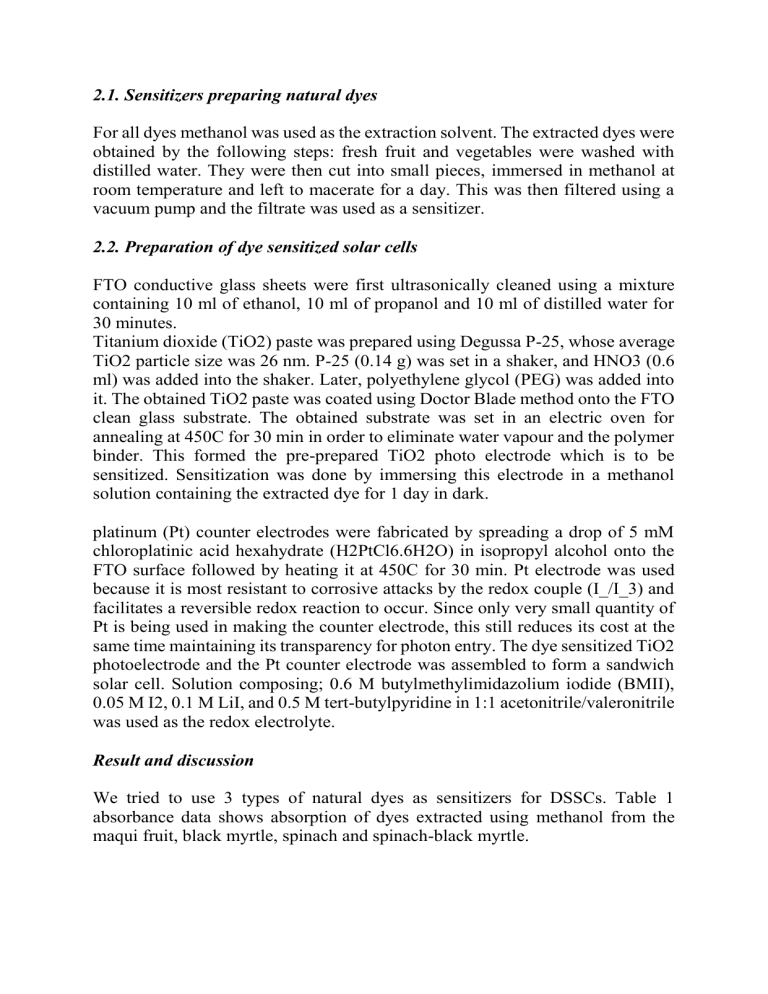
2.1. Sensitizers preparing natural dyes For all dyes methanol was used as the extraction solvent. The extracted dyes were obtained by the following steps: fresh fruit and vegetables were washed with distilled water. They were then cut into small pieces, immersed in methanol at room temperature and left to macerate for a day. This was then filtered using a vacuum pump and the filtrate was used as a sensitizer. 2.2. Preparation of dye sensitized solar cells FTO conductive glass sheets were first ultrasonically cleaned using a mixture containing 10 ml of ethanol, 10 ml of propanol and 10 ml of distilled water for 30 minutes. Titanium dioxide (TiO2) paste was prepared using Degussa P-25, whose average TiO2 particle size was 26 nm. P-25 (0.14 g) was set in a shaker, and HNO3 (0.6 ml) was added into the shaker. Later, polyethylene glycol (PEG) was added into it. The obtained TiO2 paste was coated using Doctor Blade method onto the FTO clean glass substrate. The obtained substrate was set in an electric oven for annealing at 450C for 30 min in order to eliminate water vapour and the polymer binder. This formed the pre-prepared TiO2 photo electrode which is to be sensitized. Sensitization was done by immersing this electrode in a methanol solution containing the extracted dye for 1 day in dark. platinum (Pt) counter electrodes were fabricated by spreading a drop of 5 mM chloroplatinic acid hexahydrate (H2PtCl6.6H2O) in isopropyl alcohol onto the FTO surface followed by heating it at 450C for 30 min. Pt electrode was used because it is most resistant to corrosive attacks by the redox couple (I_/I_3) and facilitates a reversible redox reaction to occur. Since only very small quantity of Pt is being used in making the counter electrode, this still reduces its cost at the same time maintaining its transparency for photon entry. The dye sensitized TiO2 photoelectrode and the Pt counter electrode was assembled to form a sandwich solar cell. Solution composing; 0.6 M butylmethylimidazolium iodide (BMII), 0.05 M I2, 0.1 M LiI, and 0.5 M tert-butylpyridine in 1:1 acetonitrile/valeronitrile was used as the redox electrolyte. Result and discussion We tried to use 3 types of natural dyes as sensitizers for DSSCs. Table 1 absorbance data shows absorption of dyes extracted using methanol from the maqui fruit, black myrtle, spinach and spinach-black myrtle.




